|
One children's singing game, collected in St. Louis in 1944, has an interesting plotline. LaDora was a pretty girl; She lived up in a castle high. One day there came a wicked witch; She point her stick right in her eye. She fell asleep a hundred years; The princess clucked the hinges down; The princess picked LaDora up, Tra, la, lala, la, la, lala! It's Sleeping Beauty in song form! The collector, Leah Yoffie, seemed baffled by the song. She heard it from a little girl who knew it as a "ring game," but found no one else who recognized it. However, other scholars quickly recognized the song as a variant of "Fair Rosa" or "Thorn Rosa." Here's one version of the lyrics to this song: Thorn Rosa was a pretty child, Pretty child, pretty child, Thorn Rosa was a pretty child, Pretty child. She lived up in a castle high... One day there came an ugly witch... Thorn Rosa slept a hundred years... A thorny hedge grew giant high... One day there came a handsome prince... He broke right through the thorny hedge... Thorn Rosa wakened at his touch... They all lived for a hundred years, A hundred years, a hundred years, They all lived for a hundred years, A hundred years. The song is accompanied by a game, in which a girl playing Thorn Rosa sits at the center of the group. Around her is a small circle of children holding hands, representing the castle. An outer circle of children represents the hedge. A child playing the ugly witch enters the circle to touch Thorn Rosa and put her to sleep. The prince then breaks through the circles and wakes Thorn Rosa. The LaDora version seems pretty garbled but is clearly the same song. Yoffie didn't include the tune, so it can't be compared, but she might have shortened the song. Originally, each line was probably a repeating verse of its own. So where did this song come from? In 1897, Franz Magnus Bohme collected a German version which was somewhat more elaborate. It was titled Dornröschen (literally "Little Briar Rose"), being an adaptation of the Brothers Grimm fairytale.
Most scholars believe that the song was of artistic origin. It's a play-by-play adaptation of the fairytale. It never appeared until the 1890s, when it was printed in several books, and Bohme said that it was created for use in playschools. Translations simplified the lyrics almost immediately, and modern versions focus on repetition.
An English translation was published in 1908 in in Folk Dances and Games by Caroline Crawford. It entered tradition as a popular game, probably usually taught to children by adults. The song appears in the Roud Folksong Index as "Fair Rosa," number 7889. There are multiple variants listed, including "Fair Rosie," "Sweet Rosebud," or even "Forosa." In 1915, Dagny Pederson and Neva L. Boyd translated a Danish variant. The song still exists in Danish today as "Tornerose var et vakkert barn." Herbert Halpert recorded two New Jersey versions in 1935 - "Thorn Rosa" and "The Princess Slept for a Hundred Years." The same year, over in Ireland, Sam Henry collected "Fair Rosa" in Coleraine, County Londonderry. From Ecuador, "Rosa era linda" appeared in Rique Ran: Games and Songs of South American Children by Mary L. Goodwin and Edith L. Powell (1951). A Belgian version recorded around 1958 runs "La bell' au bois, la bell' enfant." In the 1985 book The Singing Game, Iona Opie listed many versions of the song. The song has definitely entered oral tradition since the time it was written. Most recently, it has been covered by the children's band The Wiggles under the title "There Was a Princess." As a sidenote, in 1883, William Wells Newell printed a couple of songs from Massachusetts and Texas. The basic game is the same - a girl pretends to sleep in the middle of a ring, until a boy breaks through to kiss her. Here we go round the strawberry bush, This cold and frosty morning. Here's a young lady sat down to sleep, This cold and frosty morning. She wants a young gentleman to wake her up, This cold and frosty morning. Write his name and send it by me, This cold and frosty morning. Mr. ____ his name is called, This cold and frosty morning. Arise, arise, upon your feet, This cold and frosty morning. Newell asserts that this song is descended from an old English May-game and suggests it developed from the story of Sleeping Beauty. However, although there are similarities to the Thorn Rosa circle dance, there's a pretty big leap from these lyrics to the Sleeping Beauty plot. You can listen to a modern version of Dornroschen at Mama Lisa's World, or watch some versions like Thorn Rosa, Fair Rosa, or "There was a lovely princess" (from 1957!) on YouTube. Sources
1 Comment
A king asks his seven daughters which of them loves him most. Each has a flattering compliment, except for the youngest, who says only that she loves him as much as she loves salt. Feeling insulted, the king casts her into exile.
After much wandering, she finds a palace deep in the jungle, where a handsome prince lies dead. His body is completely covered in needles. She begins pulling out the needles and doesn't stop for three weeks, even to eat or sleep. When she is almost done, she asks her servant girl to watch the prince while she goes to bathe for the first time in almost a month. As soon as she's gone, the servant girl yanks out the last few needles and the prince is magically restored to life. The servant claims to be the one who saved him, and tells him that the real princess is only a servant. So the servant becomes a prince's wife, and the princess is left as a lowly slave. One day the prince goes on a journey. His wife asks him to bring back fine clothes and jewelry, while the heroine asks for a sun-jewel box. The prince is baffled by this request, but finally tracks one down for her. She takes it outside, at which point seven dolls come out of the box, set up a tent for her, and wait on her while she tells them her life story. This goes on from night to night. A woodcutter notices this and alerts the prince. When the prince learns the truth, he takes her as his wife and dethrones the false bride. This is "The Princess Who Loved Her Father Like Salt," an Indian tale that falls under Aarne Thompson Type 437. This tale type is known as The Supplanted Bride or the Needle Prince. It was removed from later versions of the Aarne Thompson index, and appeared only as a part of AT 894, The Ghoulish Schoolmaster and the Stone of Pity. It seems like this was a mistake. The Supplanted Bride is often very different from the Ghoulish Schoolmaster. They seem to have been merged into the same tale type based on a couple of versions which combined both, and the final scene, where the persecuted heroine tells her story to an unusual object such as a stone or a doll. Type 437 has been collected throughout Europe, Africa, and the Middle East. It makes up the frame story of the Pentamerone. The heroine's task varies from story to story. Some examples are filling buckets with her tears, pulling needles out of the cursed prince's skin, fanning him, or watching over him for a period of weeks, months, or years. It overlaps with many Sleeping Beauty stories, where a maiden falls into a cursed sleep when stabbed by a magic needle. This is what happens in "The Young Slave," a Snow White-esque story from the Pentamerone. She, too, is treated like a servant until her uncle overhears her telling her story to a doll, a stone, and a knife. There are also strong connections to false bride stories such as "The White Bride and the Black One" or "The Three Oranges." In some versions, the false bride gets rid of the true bride by stabbing a magic pin into her head and turning her into a bird. The bird may then sing her life story. The ugly false bride, usually a slave, is particularly likely to be a black woman, "Moorish," or a "gypsy." These are tales born of classism and racism, betraying fear of a lower class who might decide to rebel. At the end, the servant is often brutally punished for her insurrection. On another note, variants of "The Three Oranges" usually begin with a prince who is either cursed or inspired to seek a mythical bride, who may be as white as snow and red as blood. In the Pentamerone, Zoza is cursed in exactly this way when she laughs at an old woman. In the Angolese story of Ngana Fenda Maria, the heroine cuts her finger and is struck by the image of her blood on a piece of sugarcane. In these cases, the inciting event and the quest for a wonderful spouse are exactly like "The Three Oranges." However, the male hero of "The Three Oranges" never has to deal with the trials and travails of "The Supplanted Bride." Closer to the Supplanted Bride is the tale of The Skilful Huntsman, AT type 304, collected by the Brothers Grimm. A young man goes out to seek his fortune as a huntsman. While fighting giants, he enters a castle and finds a princess sleeping. He steals a sword, a slipper and a scrap from her dress without awakening her, and then returns to slaying the monsters. He cuts out the giants' tongues and goes on his way. When the inhabitants of the castle awake, they find the giants dead. One of the king's soldiers, an ugly one-eyed man, claims to be the giant-slayer. The princess is supposed to marry him and when she refuses, her father condemns her to live in a hut giving away food. One day the hero drops by. She asks him to tell his story and he shows her the tokens he took from the castle, along with the giants' tongues. With that, the soldier is revealed as a fraud and executed, and the hero marries the princess and becomes the next king. Here you have the sleeper, the impostor, and the conclusion where the hero recounts his story. Some other variants are Niels and the Giants (Denmark), The King of Erin and the Queen of the Lonesome Island (Ireland), and The Sleeping Queen (Italy). There's more room here for social advancement, with the hero sometimes going from peasant to king. The sleeping maiden can either be under a curse or sleeping normally. The hero doesn't awaken her, but leaves something to show he's been there - by cutting a piece from her garment, leaving a token of his own, or impregnating her. This causes her to seek him out once she does wake. In "The Supplanted Bride," the heroine must earn her husband by serving him for years upon years, completing ridiculously arduous tasks, and being the perfect servile wife whose whole life centers around him. It's her wifely devotion that restores the man to life. When she falters from her duty, even for a second, she loses everything and has to endure even more trials while being treated like a slave. By contrast, the hero of Type 304 shows little attachment to the sleeping princess. He comes and goes in a brief space of time, and certainly doesn't wait to see if she wakes up. Afterwards, he might be bothered by having his fame stolen, but doesn't have much trouble setting out to make his own way in the world. The task of seeking the truth falls to his bride. Several folklorists have commented that stories of The Supplanted Bride encourage women to obediently endure suffering and misery. In the Greek tale "The Sleeping Prince," the maiden tells her story to a hangman's rope, a butcher's knife, and a millstone of patience. The rope and knife advise her to commit suicide, while the stone encourages her to be patient and endure. In her despair, she sees these as her only two options. However, Christine Goldberg points out that the heroine gets what she wants after she loses her patience. She complains, loudly, sometimes repeatedly, whether in public or in private. She earns her happy ending not by enduring silently, but by speaking up. Sources
I've started researching Snow White and Sleeping Beauty tales, so I decided to check out the Schools' Collection. The Schools' Collection is a compilation of folklore, all collected by Irish schoolchildren during the 1930's. This was part of a coordinated effort in the school system to preserve folklore, both stories and superstitions. Thousands of the stories, written in English and Gaelic, have currently been digitized and can be viewed online here.
So far, I've found one strikingly unusual Snow White story: "The Bright Star of Ireland." It was told by a travelling workman named Patrick Gillispie, age 60, a native of County Louth. The collector was 13-year-old James Fox. There’s a princess so beautiful that she’s called the Bright Star of Ireland. Her vain stepmother frequently bathes in a pond. One day when she’s admiring her reflection, a brown trout tells her that her stepdaughter is more beautiful than she is. The queen sends two black servants to kill the girl in the forest and bring back her heart and liver. Instead, the servants take pity on the girl and give the queen the heart and liver of a lapdog. (The narrator, unfortunately, uses the N-word for the servants.) The queen finds out, of course, and tries once again to have the girl killed. This time the servants argue. They end up fighting, and the one defending Bright Star wins. He takes the heart and liver of the other servant to give to the queen, and warns Bright Star to flee. She finds her way to an island where she enters a beautiful palace. A cat welcomes her in and tells her that in the night, a pack of huge cats will come in and tear at her. On the first night, at eleven o'clock, she is attacked and scratched by six cats; on the second night, twelve cats; on the third night, twenty-four cats. After she has endured the third time, someone enters the room - but instead of her first feline friend, it's a handsome young king. The two get married and are deeply in love. However, yet again the stepmother learns of her survival and goes to visit. While shaking hands with the girl, she drives a “sleeping needle” under her fingernail. The girl’s husband returns to find her seemingly dead, but instead of burying her, keeps her in a locked room which he frequently visits. He unwillingly takes a second wife. His new mother-in-law tells his second wife to investigate the locked room, so she finds the Bright Star inside and, by washing her face and hands, pulls out the needle and awakens her. Bright Star and her husband are reunited, and the second wife stays on as Bright Star’s waiting maid. Learning of Bright Star’s survival from the trout, the stepmother makes one more attempt at visiting in order to give her poisoned wine. However, the waiting maid knocks the wine out of her hands and the murder attempt is revealed. They execute the stepmother by throwing her into the sea in a barrel, and Bright Star’s father marries the waiting maid. The plotline is almost completely identical to “Gold-tree and Silver-tree,” a Scottish Snow White story. In both tales, rather than a magic mirror, there's a talking trout - reminiscent of the salmon of knowledge in the story of Fionn. "The Bright Star of Ireland" has two major differences from "Gold-tree." One is the incident with the giant cats, where Bright Star must endure pain before earning an advantageous marriage. It's an unusual interlude which is never fully explained. Why must the heroine go through this? It reminds me of stories like "The Wild Swans" or "East o' the Sun and West o' the Moon" where the heroine has to go through various trials in order to save a man from a curse - like sewing with painful nettles that sting her hands, or sleeping alongside an enchanted prince at night. The other major difference is that in "Gold-tree," the prince goes with the bigamy option and keeps both wives. I prefer this version, where the prince and second wife immediately separate (with an astonishing amount of good will on both sides) and she ends up as Bright Star’s new stepmother. It's always nice to read fairytales where women are close friends and allies. The motif of the second wife who saves the first wife seems strange compared to other Snow Whites, but there's actually a long tradition related to this. It's not always the prince who awakens the sleeping girl, but his female relative! It grants the stories a kind of balance. One mother figure/sexual rival is predatory and jealous, and tries to kill Snow White. The second mother figure/sexual rival is loving and generous, and restores her to life. In stories such as the Italian "The Crystal Casket" and "Maria, the Wicked Stepmother, and the Seven Robbers," it's the prince's mother who opens up the room and orders servants to wash the heroine's face and dress her. This is what frees her from the curse. However, sometimes it's the heroine's co-wife who saves her, as in the Breton poem 'The Lai of Eliduc," from the late twelfth or early thirteenth century. The married Eliduc falls in love with another woman, who sinks into a deathlike sleep. His wife, Guildeluec, soon discovers this state of affairs. Rather than getting angry, she revives her husband's mistress with a magic flower and steps aside so that they can marry each other. This is more like "The Bright Star of Ireland." Polygamy was an established custom among the Celts and Gaels. Marie du France called the Lai of Eliduc "a very old Breton lay" when she wrote it down. There may have been ancient pre-Christian versions where Eliduc, like Gold-tree's prince, kept both wives. Sources
I have found a new favorite fairytale. It begins with a wish for a child, a maiden as white as snow and red as blood, and a stepmother.
It's not 'Snow White and the Seven Dwarves,' but it's clearly a response to such tales. After a very Snow White-like beginning, it runs wild in its own direction. The version I read was collected by Jon Arnason in 1852. Once there lived a childless King and Queen, as well as an untrustworthy counselor named Rauður. One day the Queen is out for a sleigh ride, with Rauður attending her. The Queen has a nosebleed and lets her blood land on the snow, at which point she wishes for a daughter as red as blood and white as snow. Rauður says that her wish will be granted, but the moment she sets eyes on her daughter, she will lay an evil spell on the child to burn down her father's palace, get pregnant before she's married, and murder a man. The Queen doesn't care because she so badly wants a baby, and soon enough it comes to pass. Remembering the curse, she sends the child away and never looks at her. The little girl, Ingibjorg, grows up with remarkable beauty, but by the time she's ten, the Queen is dying. The Queen has held out thus far without ever looking at her, but now that she's dying, gives in and calls Ingibjorg into her room. No sooner has she seen Ingibjorg than she pronounces the curse upon her and dies. More time passes, and the King takes a new fiancee, Hild. They are to be married at the end of three years. Somehow, Hild is already aware of Ingibjorg's curse and she promises to help. Hild waits until a day when everyone is out, removes everything valuable from the building, and tells Ingibjorg to burn down the palace. And then she has a nicer one built in its place. The first part of the curse is done, and no one was hurt. The next part of the curse is that Ingibjorg will fall pregnant. Hild is ready for this too. She arranges for Ingibjorg to spend a few nights at a house in the woods with a mysterious man. Now Rauður the advisor comes back into the story. He begins telling the King that Ingibjorg is pregnant - note that the King doesn't know about the curse. However, every time Rauður tries to reveal Ingibjorg's pregnancy, Hild is ready with a trick that will protect her stepdaughter's reputation. After the baby is born, Hild whisks it away into hiding. And then there's the final part of the curse - Ingibjorg will be compelled to kill a man. No problem, says Hild. Let's kill Rauður. She arranges it so that she and Ingibjorg allow him to fall to his death. He is not greatly missed. The day arrives for Hild and the King's wedding. Inbigjorg's lover returns with their baby. It turns out, he's Hild's brother! Hild explains the curse to the King, who was unaware of it all this time. She also explains that her brother was under a spell that made him a monster during the day, and could only be saved if a princess slept with him for three nights. With that, they celebrate a double wedding and everyone lives happily ever after. The story is clearly a response to stories of evil stepmothers. Hild is a clever and proactive heroine. In most tales, the characters try to subvert gloomy prophecies and avoid their fate, but inevitably fail. The original Queen attempts this by completely cutting off her daughter, but ultimately gives in. Hild, however, allows the curse to work under her conditions. In the process, she rids the kingdom of Rauður and saves both her stepdaughter and her brother. Maria Tatar points out that even though Hild is a hero, the title "The Good Stepmother" is a bit misleading. She doesn't become a literal stepmother until the very end of the story, since her wedding is postponed for three years. In addition, she's saving Ingibjorg from a curse created by her biological mother. So this story does not totally escape the trope of the evil maternal figure. At first I was startled by Hild's cavalier attitude towards murder, but then I thought more about it. Rauður is the one who lays out the description of Ingibjorg's curse. It seems like he's just predicting it, but it might actually be a deal-with-the-devil situation. The text says, "The Queen was willing to do anything to get a daughter." Later, it's Rauður who becomes dead-set on revealing Ingibjorg's pregnancy and ruining her. Only after he's dead is Ingibjorg free, and only after he's dead can the truth come to light. (The King is unaware of the curse until the very end. The knowledge is available only to his wives and daughter.) Another version of the story, in the collection All the World's Reward, makes it even clearer that Rauður is the true source of Ingibjorg's curse. In many of these snow-white maiden stories, the girl's name emphasizes her color. Her name is typically some variation on "White as Snow." Here, however, the only character with a color name is the villain: Rauður, or Red. Historically, red is associated with blood and violence. In many cultures redheads have been considered untrustworthy or even associated with witchcraft. Another Icelandic tale, "Surtla in Bluelands Isles," also features a girl named Ingibjorg, a woman named Hildr who eventually becomes her stepmother, and an evil troll named Raudr. "The Good Stepmother" has its own tale type: AT 934E. Although rare, it appears in a few countries other than Iceland. If you've come across any versions of this story, let me know! Sources
Snow White must be a popular name in Fairytale Land. There's:
Of course, the most well-known Snow White is the one with the dwarves, and she gets her name in an unusual scene. While sewing, a queen pricks her finger and drops of her blood fall onto the snow. She remarks, “Would that I had a child as white as snow, as red as blood, and as black as the wood of the window-frame.” The resulting child is Snow White. This scene appears often in other fairytales. The Grimms also collected a Cinderella variant, beginning “A beautiful Countess had a rose in one hand and a snowball in the other, and wished for a child as red as the rose, and as white as the snow. God grants her wish.” In a Snow White variant, a count and countess are driving in the countryside. They pass three heaps of white snow, three pits full of blood, and three black ravens. What the pits of blood were doing there I have no idea. In this tale it is the husband who wishes for a girl “white as snow, red as blood, and with hair as black as the ravens,” and she instantly appears. The jealous countess tries to get rid of her, which segues into the more well-known Snow White story. In A Hundred and One Nights from North Africa (not to be confused with A Thousand and One Nights), King Sulayman ibn ‘Abd al-Malik sees two ravens fighting in his courtyard. This causes him to wonder, “Did God ever create a girl with skin as white as this marble, with hair as black as those ravens and with cheeks as red as their blood on the marble floor?” (The answer is yes. He finds her.) Similar incidents with a dying black-feathered bird against white marble or snow appear in “The Crow" (from Italy), "La princesse aux trois couleurs" (from Brittany) and "The Snow, the Crow and the Blood" (from Ireland). In "The King of Spain and the English Milord" from Italy, there's a maiden "as white as ricotta and rosy as a rose." In the Italian tale of “The Three Citrons,” a prince cuts his hand slicing ricotta cheese and decides he wants a wife “exactly as white and red as that cheese tinged with blood.” When trying to capture a fairy, he finds a girl as white as milk and red as a strawberry, and then a girl "as tender and white as curds and whey, with a streak of red on her face that made her look like an Abruzzo ham or a Nola salami." Not making that up. It’s strange that these violent scenes move the character’s mind to human beauty. The emphasis is on the colors being so so vivid, beautiful and significant that they cause this kind of reaction. Red represents life and passion, and white represents purity. Black is mentioned less often and is left out of some stories, but can represent death. These are the most significant colors in folklore and in some languages, and also in the early history of clothing dye. Some writers connect them to a Maiden/Mother/Crone Triple Goddess. The focus of the red blood with the pure white color can have sexual connotations and makes most analyses lean towards a girl going through her menstrual period or losing her virginity. But the colors aren’t just feminine. Although it's much rarer, they can be gender-neutral. In The Juniper Tree, a mother wishes, “ah, if I had but a child as red as blood and as white as snow.” She then gives birth to a son. In the Irish legend “Deirdre and the Fate of the Sons of Usnach,” Deirdre declares, "I can love only a man with those three colors: cheeks red as blood, hair black as a raven, and body white as snow." In the Italian tale "Pome and Peel," a young nobleman is as white as an apple's flesh, and his foster-brother is red and white like an apple peel. (Red, white and black are thematic colors throughout the tale.) These three colors were the marks of idealized beauty in many European countries, seen in descriptions throughout plays and Renaissance poetry. In Arabian poetry, the colors were for men or women. In one poem, the ideal man has “cheeks beautiful as a red rose on lily-white.” And according to another piece: “That woman is beautiful who possesses three white qualities, three black, three red; white body, teeth and the white of the eyes; black hair, eyebrows, and pupils; red lips, cheeks and gums.” The red and white coloration marks the person as beautiful and healthy. They are fair-skinned and unblemished, meaning they are upper class and don't work outside much, but not sickly pale. That poetry example lays out exactly what is supposed to be red and what is supposed to be white. The standard of beauty is someone with nice skin, clear eyes and healthy teeth. Sources
|
About
Researching folktales and fairies, with a focus on common tale types. Archives
July 2024
Categories
All
|
Writing in Margins
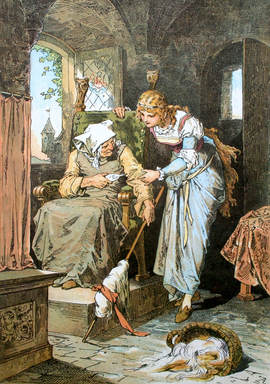
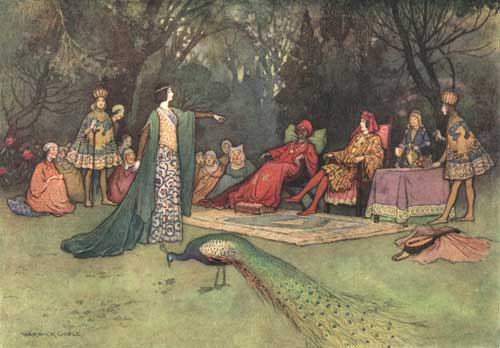
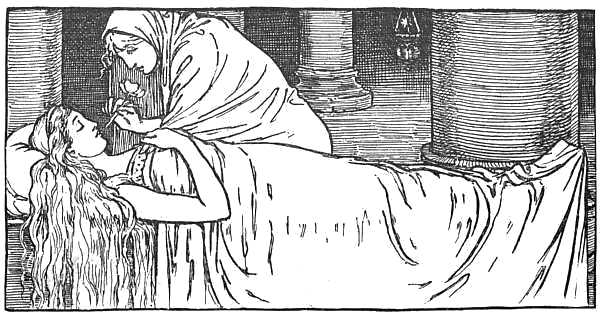
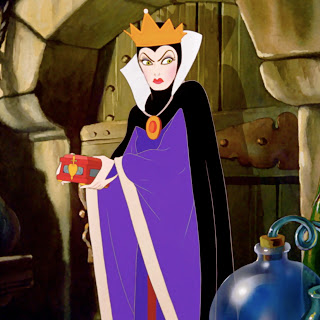
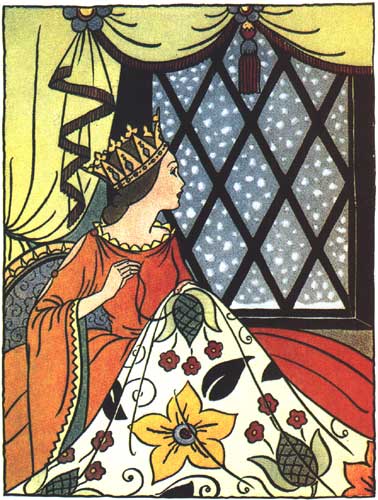
 RSS Feed
RSS Feed
